September 2004 -
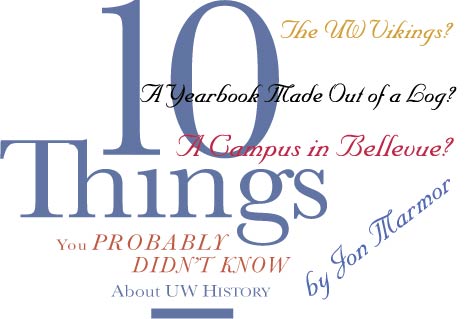

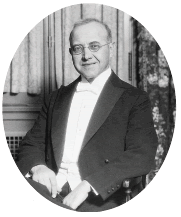
The UW Alumni Association's loyalty to UW President Henry Suzzalo (above)
led to its banishment from campus in 1928. File photo.
When regents appointed by Gov. Roland Hartley fired UW President Henry Suzzallo in October 1926, tempers flared. Students demonstrated and called for a strike. While Suzzallo told students to return to the classroom, the UW Alumni Association and others tried to oust Hartley through a recall initiative. The effort failed -they did not get enough signatures-and two years later, UW officials told the association to leave campus. The ban lasted until 1934. Technically its offices are again off-campus (although located across the street), but the UW Alumni Association is one of the UW's strongest supporters and ranks among the top-15 membership alumni associations in the nation.

Long before the Tyee, the University of Washington had a very distinct student yearbook. Wooden, you might call it. It was called "The Log of '94" because it was carved out of a log of an alder tree. In 1894, students were invited to write their names on the log's pages, which are small rectangular pieces of wood housed inside the carved-out center of the log. The unique yearbook was used for only one year. The yearbook then became a traditional volume that could be carried around, autographed and kept on a bookshelf. The log is now housed in the Special Collections Department in the basement of Allen Library.
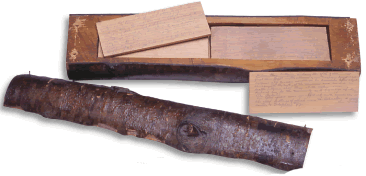
The UW's very first student yearbook was carved into a hunk of an alder log in 1894. Photo by Babcy Hines.
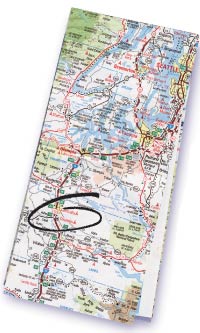

In 1858, the territorial legislature passed a bill locating a new Territorial University in Lewis County, provided 160 acres were set aside for a campus. One minor problem: the land was never donated. So, in 1860, the Legislature decided to relocate the University to Seattle, then a "drab, unattractive village which could count only 20 families and unmarried men to bring the total to some 200 inhabitants," according to one account. The Denny, Terry and Lander families came up with 10 acres for a new campus. And the rest is history.

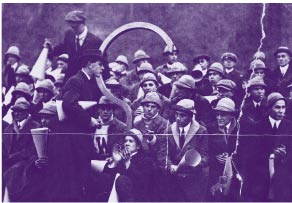
UW football fans celebrated the Huskies' dominance in the early 1900s by bringing "the
hook" with them to football games, such as this 1912 contest in Portland, Ore. Photo from
UW Libraries, Special Collections, Neg. #UW 919.
From 1908-1916, the Huskies were a football juggernaut, going 58-0-3 under Coach Gil Dobie. And UW fans brought with them an item that symbolized the might of Husky football: the hook. Introduced by yell leader Bill Horsley in 1911, the hook, which was 10 feet tall and made of oak, was carried to each Husky football team as a symbol of the Huskies' dominance. Eventually the original hook was fitted for chains and guarded by members of the "W" club. No one knows what became of the hook.

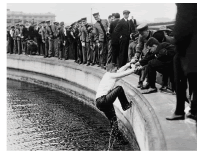
Tossing freshmen into the Geyser Basin led to a new name for that body of water: Frosh Pond. In this photo, upperclassmen are helping a freshman out of the water. Photo from UW Libraries, Special Collections, Neg. #UW 21961.
Playground
Originally called Geyser Basin for the 1909 Alaska-Yukon-Pacific Exposition, Frosh Pond has been the site of such campus activities as Garb Day and a '60s non-traditional "Be-In" expressing the pacifism of "Gentle Thursday." On a fine autumn day in 1909, a group of well-organized UW sophomores battled a contingent of bewildered freshmen near Denny Hall. The second-year students captured a number of freshmen, then wondered what to do with them. One bright mind thought of Geyser Basin, so the hapless prisoners were marched to the pond and tossed in. A tradition was born and "Geyser Basin" became "Frosh Pond" for all time.
Go To: Page 1 | Page 2

![]()

![]()



![]()

![]()
